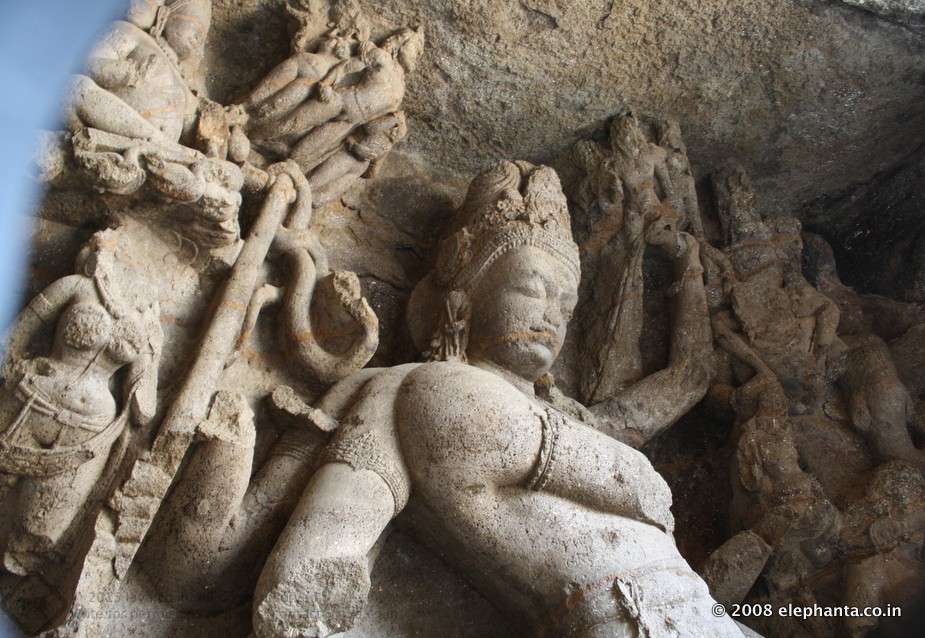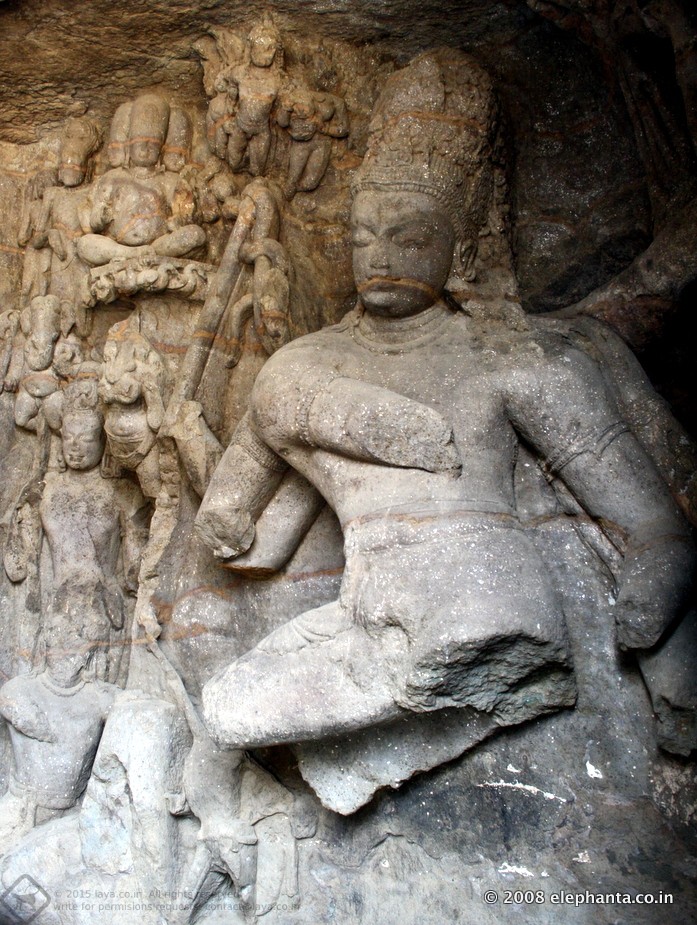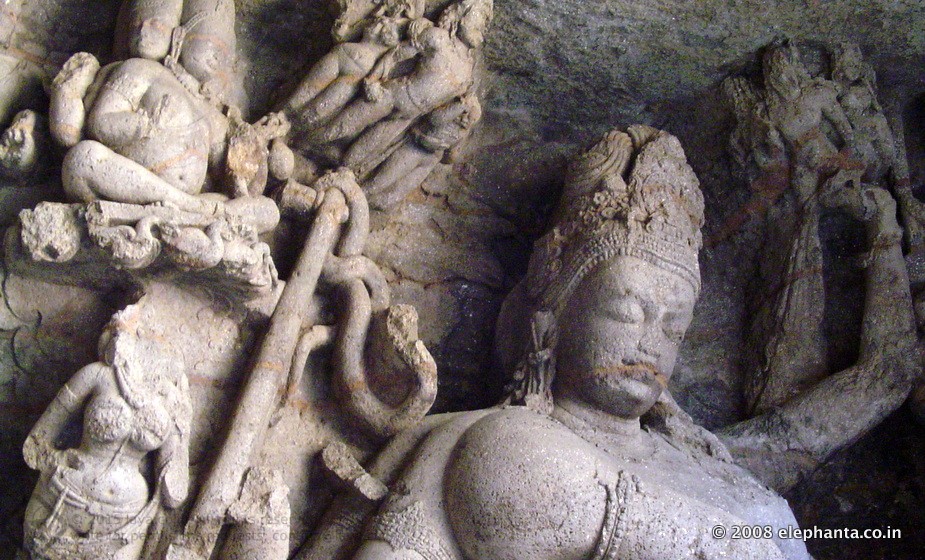Nataraja at Elephanta

Nataraja at Elephanta Caves
Nataraja at Elephanta Caves
N
ataraja Panel is located at the entry point of the main cave, opposite to the Mahayogi Shiva at Elephanta. After the three panels (Gangadhara at Elephanta , Mahesh Murthy at Elephanta and Ardhanarishvara at Elephanta ) which are located in the deep wall of the cave, this is the most dynamic of all the panels of Elephanta.As it is located right next to the portico, it is well illuminated by natural light. Natraj , the king of dancers is portrayed in the classical posture of the cosmic dance.
This aspect of Shiva is shown with eight hands. The lower portion of the panel and the arms are partially missing. However the image still retains the grace of the movement the rock cut artist wanted to capture.
One of his right hand holds the battle axe while a left hand stretches across the torso. Though it adds to the balance of the image, the other two hands are broken from elbow. The cobra twists itself from the battle axe and move forward to Shiva’s shoulder.
While one of his left hand is shown lifted , the other left hands follows the body with its graceful bend.
Shiva’s head is tilted towards right and a bunch of his matted hair shown flowing over the left shoulder.
A closer look can even reveal the folded cloth on the left thigh. So are the decorated bands tied around the upper arms.
Even in its ruined condition , the image is majestic. As usual around the dancing Shiva are a plethora of godly themes. Most notable is that of the three headed Brahma at the top corner of the panel, on your left. His circular seat is carried by a flock of flying swans. Just behind Brahma are two semi naked ascetics. Below them stands two of Shiva’s sons – the elephant headed Ganesha and the larger image of Subramanya ( Kumara). While Ganesha is considered as the Lord of Beginnings, Subrahmanya is considered as God of War.
Next to Subrahmanya stands a female attendant whose face is completely damaged. Below Subrahmanya sits a drummer.
On the left of the dancing Shiva ( on your right) are the images of Parvati ( Shiva’s consort), standing in a bit shying away posture. Above Parvati are the two gods – Vishnu riding the Garuda and Indra (king of gods) riding Airavat, the white elephant.
Further on either sides of Shiva’s head are the rows of flying celestial attends.
Having seen the two panels at the portico, you would now either head straight to the deeper end of the cave or go along the wall in a circumambulatory fashion. It doesn't matter what path you chose as long as you keep the general topography in mind, so that you would not miss anything.

Shiva as Nataraja the Lord of Dance
Shiva as Nataraja the Lord of Dance

Two of Shiva’s sons – the elephant headed Ganesha and the larger image of Subramanya ( Kumara) located on the left of the Nataraja image.
While Ganesha is considered as the Lord of Beginnings, Subrahmanya is considered as God of War.

Nataraja, Shiva as the lord of dance
Nataraja, Shiva as the lord of dance
